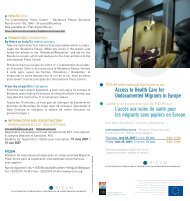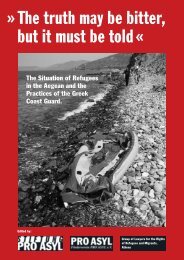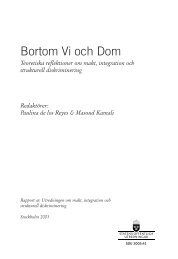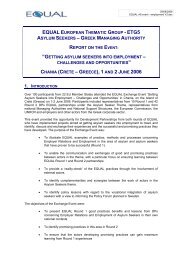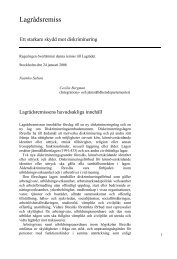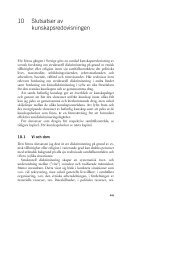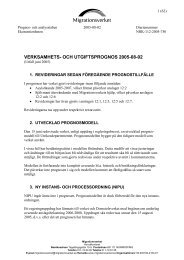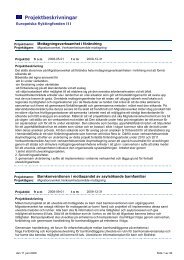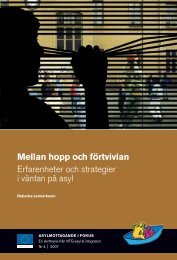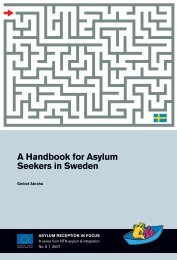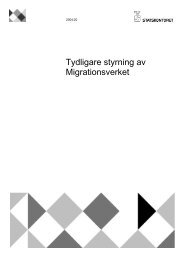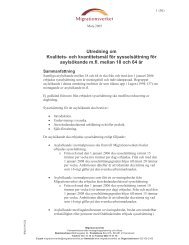SKOLAN GÖR SKILLNAD - DiVA
SKOLAN GÖR SKILLNAD - DiVA
SKOLAN GÖR SKILLNAD - DiVA
You also want an ePaper? Increase the reach of your titles
YUMPU automatically turns print PDFs into web optimized ePapers that Google loves.
Summary<br />
the staff’s actions, reasoning and argumentation often are taken for<br />
granted and manifested in a common-sense knowledge that is not always<br />
accessible for reflection.<br />
The book consists of eight chapters; the first two devoted to what has<br />
been outlined above. Five empirical chapters then follow, of which the<br />
first, Chapter 3, Everyday Life at Centrum School [Vardag och villkor i<br />
Centrumskolan], describes the context of the school personnel’s conversations<br />
and actions. In examining the restructuring of the Swedish school<br />
system, and how these reforms have affected local work, it becomes clear<br />
as to how ethnicity as a category has been woven into the remodelling of<br />
the school, has led to changes in governance and now frames the everyday<br />
life of the school.<br />
Today the Swedish school is influenced by the idea of competition, in<br />
which the school’s reputation, number of pupils and grade statistics are important.<br />
In this context, two pupil categories in particular stand out as central:<br />
“Swedish” pupils and “immigrant pupils”. The former student category<br />
is regarded as highly desirable by the school’s staff and is seen as a guarantee<br />
for the upkeep of its good reputation. The latter category, on the other<br />
hand, is regarded as a cause for concern in that “Swedish” pupils are not attracted<br />
to the school if the number of “immigrant pupils” is too high.<br />
School personnel deal with this by developing strategies for how they<br />
speak about and categorise their school in different situations. When it<br />
comes to requesting money for activities, the designation “large number of<br />
immigrants” is considered suitable, as this immediately gives the impression<br />
that the school has a number of problems in relation to these pupils<br />
and is therefore in need of extra resources. The term “international”<br />
school, on the other hand, comes across as something positive, where one<br />
imagines exciting and future-oriented activities taking place. Such a concept<br />
thus appears in information brochures designed to market schools<br />
and attract potential pupils and parents. This different ways of talking<br />
about and describing the school has been developed into a routine and obvious<br />
way of presenting one’s own school in order to meet different needs,<br />
and illustrates how the school’s practices are institutionalised. The tension<br />
that arises revolves around the school being confronted with the need for<br />
“Swedish” (middle-class) pupils in order to retain its good reputation, at<br />
the same time as “immigrant pupils” provide the school with more teaching<br />
resources.<br />
The four subsequent chapters are devoted to an examination of how differences<br />
are created and recreated in the school’s everyday life through focusing<br />
on four differentiating practices.<br />
Chapter 4, Differences that Divide [Skillnaden som tudelar], examines<br />
how differences are created with the aid of culture and how the school’s<br />
students and personnel are differentiated as “Swedes”, “immigrants” and<br />
204




